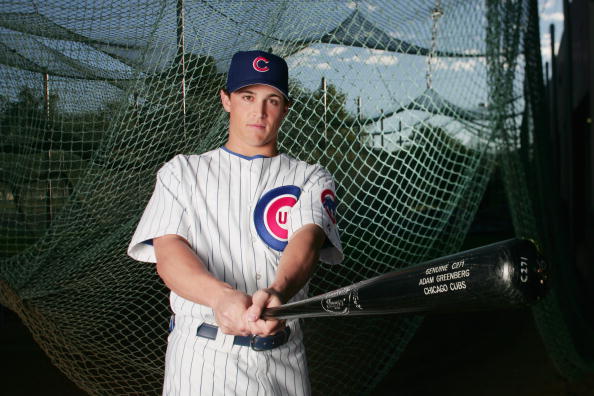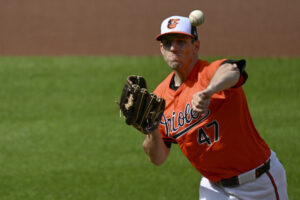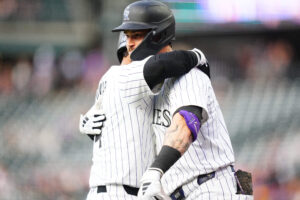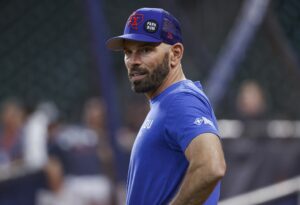It would be too easy to choose B is for Baseball or anything ball or base or bat-related. This has to be somewhat of a challenge and a learning process for us or why even do it? So after perusing the pages of The Dickson Baseball Dictionary, which is an enjoyable pastime in itself, this writer has decided that B is for Beany.
B is for Beany
We all know what a beanball is. And if you don’t here’s the short of it: it’s a pitch that hits a batter in the head. This action occurs sometimes intentionally and sometimes accidentally. Whether it’s done with intent, or by mistake, a beanball is frightening, dangerous, and sometimes anger-inducing. But what of the mental side effects of taking a pitch to the head? There are sure to be both physical and psychological repercussions for taking a 95 mph fastball to one’s dome or, yes, bean. And what is the word for the prolonged effects of such a traumatic brain injury in baseball? The answer is beany.
Hugh S. Fullerton
Baseball is a perfect reflection of life, meaning that it is always changing and evolving. From its’ earliest days, the game’s dictionary was quickly expanding, and Hugh S. Fullerton, a well-known sportswriter during the early 20th century tried to capture this expression accretion. He wrote an article titled, “The Baseball Primer” for American Magazine in June of 1912. Fullerton’s intent was not to write an all-inclusive dictionary of baseball terms, but rather, as he states in the title of the article a “primer” of the “commonest words and phrases” of the game.
It is in Fullerton’s article that we find the definition for beany. Fullerton writes, “slightly erratic mentally, a condition attributed to being hit on the head by pitched ball, or beaned. Condition similar to “The Dance” a disease among prizefighters who have been struck on the head often.” What Fullerton is referring to, mainly in the case of “The Dance” is what we call chronic traumatic encephalopathy (CTE). Repeated or multiple head impacts are one of the causes of CTE, which is often associated with sports such as football and boxing. CTE may cause memory loss, confusion, impulse control issues, and aggression among other things.
The Beany
“The Beany” is something similar to, but different from “The Dance”. “The Dance” is the result of multiple head impacts that create a chronic condition or CTE. While “The Beany” is typically the result of a single beanball. The resulting effects of the singular impact are typically physically fleeting unless in extreme cases. Regardless, the mental effects may have long-lasting consequences on a player’s career and life. “The Beany” may also be looked at as another name for a concussion.
Who’s Beany
Since the founding of the National League in 1876, there have been many players who have gone beany. One of the more notable cases is that of Adam Greenberg. In 2005, Greenberg took a Valerio De Los Santos fastball to the helmet. As a result, he was noticeably dazed and was eventually diagnosed with a concussion. Following the beanball, Greenberg suffered from vertigo, which greatly impacted his performance on the diamond. He continued to play minor league ball through the 2013 season but only made it to the majors once more seven years after going beany.
Another more high-profile beany case is that of Mike Piazza. During the 2000 season, the rivalry between the New York Mets and New York Yankees was hotter than ever. An early-season game between the two saw slugger Piazza facing off against Roger Clemens. Clemens ran one in on the unsuspecting catcher and it hit him on the helmet. Piazza immediately went to the ground and suffered a concussion. The beany was so bad that he even missed the 2000 All-Star Game.
So remember next time you step up to the plate make sure you don’t dig in too much. You never know when you might catch one on the dome and come down with a severe case of the beany.
Main Photo:
Players Mentioned:
Adam Greenberg, Valerio De Los Santos, Mike Piazza, Roger Clemens






